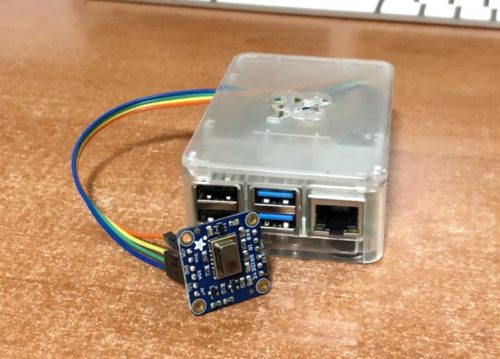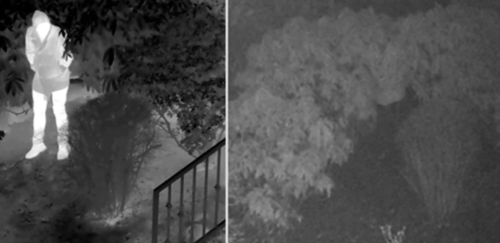
In November 2019 a DIY article was posted on how to build and train an inexpensive RPi thermal camera.
Even with more complex network architectures, the optical model wouldn’t score above a 91% accuracy in detecting the presence of people, while the thermal model would achieve around 99% accuracy within a single training phase of a simpler neural network.
Despite the high potential, there’s not much out there in the market — there’s been some research work on the topic (if you google “people detection thermal camera” you’ll mostly find research papers) and a few high-end and expensive products for professional surveillance. In lack of ready-to-go solutions for my house, I decided to take on my duty and build my own solution — making sure that it can easily be replicated by anyone.
Now you can easily make one to mount on your door and give thermal readings for guests as well as announce known visitors.
The commercial FLIR thermal camera site gives this image as proof of its utility, although I expect they soon will update to reflect pandemic uses as well.

Not surprisingly, despite the long list of reasons to use thermal imaging (e.g. higher integrity of signal, more resilient to environmental interference) the EFF makes a very tone-deaf argument against its future use:
Terrorism is one thing — because it’s an ongoing problem. But there’s no reason why this kind of technology would need to stick around after the COVID-19 crisis is over.
That reads to me that the EFF believes after COVID-19 crisis is over there will no longer be any other threats, let alone a need for higher integrity in visual signals (e.g. authentication).
Wow! 99% accuracy?
Great job!
I definitely will consider when I go at my countryside home to know who was there at my door in my absence.
PC camera might start when the software recognises a human pattern. I wonder whether a human pattern used as an output from the software can be again input and processed further …
Any thoughts … re human pattern?